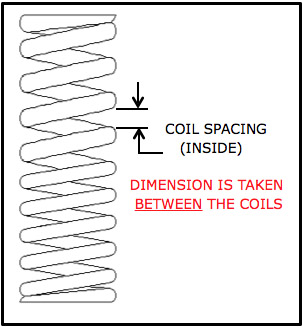Your Cart
5 Key Steps to Prepare Your Snowmobile for the Upcoming Winter Season
- October 9, 2024
Winter is coming! We’re not sure why winter isn’t everyone’s favorite season, but we couldn’t be more excited for the snow to start falling. Before you head straight for the trails, prep your snowmobile for what’s ahead. A poorly maintained snowmobile is susceptible to breakdowns and poses a significant threat to the rider’s safety. Properly maintaining your snowmobile will extend its life and keep it reliable all winter.
Don’t wait until you get that first text of the season,” You ready to hit the trails?” Start preparing your snowmobile for the winter season now.
Step 1: Inspect and Tune the Engine
The engine is the heart and soul of your snowmobile, which means that’s the first area that requires attention. You can prevent unexpected breakdowns this winter by inspecting and tuning the engine now.
A thorough check of the engine starts with a detailed visual inspection. Start by looking for any obvious signs of wear or damage. Next, watch out for oil leaks, which could indicate a much larger issue that needs immediate attention. In addition, listen for any unusual sounds coming from the engine, such as clattering or rattling noises, as these could be an early indication of an internal problem.
After the engine has been visually inspected, it’s time to tune up! A properly tuned engine will give your snowmobile the power and reliability needed to thrive in cold temperatures. There are four key elements to tuning, all of which should be performed before your first ride of the season.
Replace Spark Plugs
Spark plugs may be small, but they’re vital machine components that should be checked and replaced when they show any signs of wear. Much like a car, faulty spark plugs can lead to poor fuel efficiency, misfires, and issues with starting up your snowmobile—and who has time for that?
Check the Engine’s Compression
Low engine compression can cause poor performance or prevent the engine from starting altogether, making it an essential factor to check. To test engine compression, you’ll need a compression gauge. Begin by warming up the engine to operating temperature. Next, disconnect the ignition coil and remove the spark plugs. Next, insert the compression gauge into the spark plug hole, crank the engine holding the throttle open, and observe the pressure reading on the gauge.
Repeat this process for each cylinder. Depending on your vehicle, healthy compression readings should typically fall within a specific range. If compression is too low or uneven across cylinders, it can be an indication of worn piston rings, damaged valves, or a blown head gasket, which requires further inspection or repair.
Fuel System Check
Cold temperatures that make snowmobiling possible can negatively impact your fuel system, so it’s important to ensure it’s always clean and functioning properly. Drain any old fuel that’s been sitting since last winter and fill the tank up with fresh gasoline. You may also want to add a fuel stabilizer to help prevent condensation and freezing.
Inspect Hoses and Clamps
Lastly, make sure all hoses are free of cracks and clamps are tight. Forgetting to do so may cause leaks. Additionally, cold weather can cause rubber hoses to become brittle, so always replace hoses that appear worn—sooner rather than later.
Step 2: Check and Replace Worn-Out Parts
Snowmobiles endure significant wear and tear over time, particularly on parts exposed to increased friction, movement, and contact with snow. Regularly checking and replacing worn-out parts before the winter season will help prevent on-trail failures. Key components to expect include:
Drive Belt
Your drive belt’s main function is to transfer power from the engine to the track, making it an important element for operation. Over time, drive belts can wear down or crack, leading to slippage or breakage. If your snowmobile’s belt shows signs of wear, make sure to replace it with a new one before you head out for your first ride.
Drive belts typically last between 1,500 and 3,000 miles, but if you’re a high-performance rider or ride in extreme conditions, you may have to change the drive belt more frequently. Consult your snowmobile’s manual for your model’s drive belt specifications.
Track
Inspect the track for missing or damaged lugs and ensure it has the proper tension. Tracks that are too loose or too tight often lead to poor handling or reduced traction, making your snowmobile unsafe for operation. Tracks can last thousands of miles, but those riding in rocky terrain may see their tracks wear out faster, so you’ll need to determine a track replacement schedule based on the riding you typically do.
Skis
The skis help guide your snowmobile over snow and ice, so they must be in good working condition. Check them carefully for any signs of wear or cracks, and inspect the metal runners, also called carbides, underneath the skis for wear. Worn-out carbides can affect steering, making your snowmobile harder to control. Be sure to sharpen your carbides regularly. Using a sharpening tool, you can maintain the edge of carbide runners every 200–300 miles.
Suspension
Your snowmobile’s suspension system takes a beating during use, especially on rougher trails. Before you take it out, check all suspension components, such as shocks, bushings, and springs, for signs of wear. These components generally last 2,000 to 4,000 miles but may need replacement sooner. High-performance options are available if you need extra durability, but always ensure the replacement meets or exceeds the model’s original specifications.
Step 3: Prepare the Battery
Batteries are especially vulnerable to cold temperatures, and your snowmobile’s battery is no exception. Extreme cold can diminish battery life and cause starting issues, so proper battery maintenance is crucial to keeping your snowmobile in good condition throughout the winter season. Here are some tips for battery maintenance:
Test the Battery Voltage
- Since cold weather can slow down the chemical reactions inside a battery, reducing its ability to hold a charge, testing the voltage with a multimeter is important. A fully charged snowmobile battery should read between 12.6 and 12.8 volts. If a lower reading appears, it’s time to charge or change the battery.
Clean the Terminals
Corrosion can quickly build up on battery terminals and other connections, effectively reducing the electrical connection. If you spot signs of corrosion, we recommend using a wire brush to clean both the terminals and cable ends.
Store the Battery Properly
If you aren’t planning to use your snowmobile regularly, consider removing the battery and storing it in a warm, dry place. A trickle charger is also a great option. By keeping it out of the cold, you can effectively extend the battery’s life and lessen the need for replacement.
Step 4: Lubricate Moving Parts
Preparing your snowmobile for winter means more than just checking your parts for cracks, leaks, and corrosion. You also have to make sure all moving parts are lubricated. By lubricating the suspension, steering components, and chain case, you’ll help reduce friction, protect against rust, and extend the life of your snowmobile parts. In general, you should pay special attention to areas with metal-to-metal contact.
For the suspension components, apply high-quality grease to all grease points to ensure smooth movement. In the steering system, check the linkage for any signs of wear and apply lubricant to keep the system responsive. Each season, the chain case should be filled with chain case oil to keep the chain and gears well-lubricated.
Step 5: Safety Gear and Emergency Kit
Even if you followed this guide exactly, snowmobiling can expose riders to extreme conditions and unexpected circumstances. Having the appropriate safety gear on hand is essential for keeping yourself free from injury. Before you head to the trails, make sure you have:
- A helmet that not only fits properly but meets safety standards. Consider adding helmet safety lights to help other riders spot you on the trail.
- Goggles and/or a face covering to protect your eyes and skin from snow, wind, and flying debris.
- Warm, layered clothing, including gloves, boots, and a heavily insulated coat.
- Reflective gear or lights to enhance visibility, especially if you’re headed out in a blizzard or low-light conditions.
In addition to your safety gear, you should also pack an emergency kit stocked with essentials. We suggest including:
- A first-aid kit for minor injuries.
- Basic tools for on-the-go repairs, such as wrenches, screwdrivers, and pliers.
- Spare parts, like a spark plug, drive belt, and fuses.
- A portable charge or jump starter in case of a failed battery.
- Snacks and water to stay hydrated and field during long snowmobiling trips.
Get Ready for an Epic Snowmobiling Season
We know you’re excited to take your sled out on the trails as soon as the slow flies, but it’s important to go through this preparation checklist first. Inspect the engine, replace parts where necessary, lubricate moving parts, and don’t forget to pack up all your essential gear to set yourself up for an amazing ride.
A well-maintained snowmobile will perform better and provide a safer and more enjoyable experience for the rider. With the right care and attention, you can avoid unexpected breakdowns and minimize missing out on any riding days this season. Get your snowmobile ready for the first snowfall now by giving it the care it deserves–you’ll thank us when the season begins!

